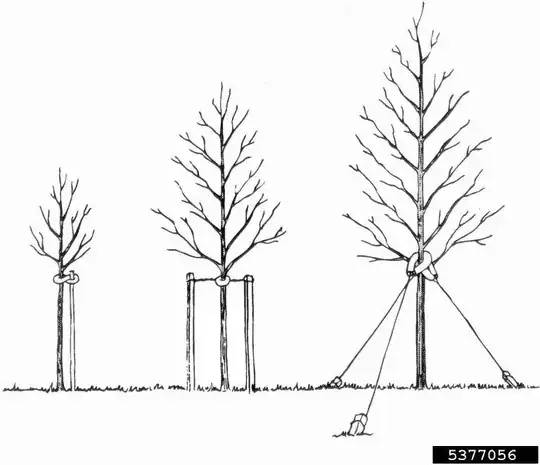I'm actually not sure how well staking will work as long term solution. Eventually the tree will likely become dependent on it. It may be possible to wean the tree off the staking, but I'm not sure. :)
Most of the drawings I've seen for staking trees are for newly planted trees. The ties are placed about 1/3 of the way up the tree so the crown can move freely (helps to develop the taper at the base) while the tree establishes roots. From the sound of your description is seems like stone strategic branch shortening may be in order to help strengthen the the branch but also remove a little of load. I know you say you don't want to prune, but it may end being more helpful to do some minimal pruning in the long run.
In terms of staking, a single stake mostly keeps the tree from moving a single direction. Two stakes are helpful to keep it from moving in two directions, and three provide the most support. Of course, every place where a cable/strap/etc touches the bark is a place where rubbing can occur, and also a place where girdling can occur if you don't keep loosening the ties annually.
I would place a single stake into the wind, two stakes perpendicular to the wind, and three as combination of the previous two. What's around the base of tree? If you have a decent sized tree ring (or planting bed) the stakes may not be an issue, but if there's turf it's going to become harder to get a mower / trimmer in there. If you're cabling the tree (as in image 3) it makes it even that much more difficult so keep that in mind when choosing both a type of staking and a layout of staking.
Another option might be a single brace under the main leader, assuming the tree is leaning enough.
